Santa Maria Style Barbecue is as iconic in California as the Golden Gate Bridge. A style of cooking full of history and lore. This approach to grilling holds a dominant place in the BBQ culture and a heart in Central Californias food scene. Going back to the days when the land around Santa Maria was given to ranchers as land grants. The Spanish vaqueros or cowboys ruled the mountains and grazing land. They tended the cattle all along the rolling hills, helping with land clearing and farming. The thick groves of California red oak, lush native pasture grasses and miles and miles of fertile soil helped grow the area’s best agriculture and cattle.
A Way of Life
In the spring, when cattle were moved from corrals to the mesa and hill areas to graze on lush grass to fatten up. The vaqueros would dig pits in the ground and create large fires with that California red oak for cooking their meals. Long metal stakes were threaded with thick chunks of meat. Simply seasoned with staple ingredients like salt, pepper and garlic or herbs found along the open pastures and hills. While the flames seared the meat, one cowboy slowly turned those metal stakes that rested over a frame on branches. The beef self-basted, with the fat heating, melting and searing over the hot embers. The “char” from the accumulation of the spices and grilled fat were the sought after pieces.
Once the beef finished cooking over the open fire, the meat was carefully slid off the metal stakes and rested. Sharp knives sliced thick cuts of the beef and placed on a dinner plate with the traditional Santa Maria sides. Beans cooked in water with bacon fat, herbs and spices. Salsa made with fresh chopped tomatoes, roasted chilies, lime juice and onions. It was a filling meal after a long day out in the hot sun working cattle from one pasture to another.
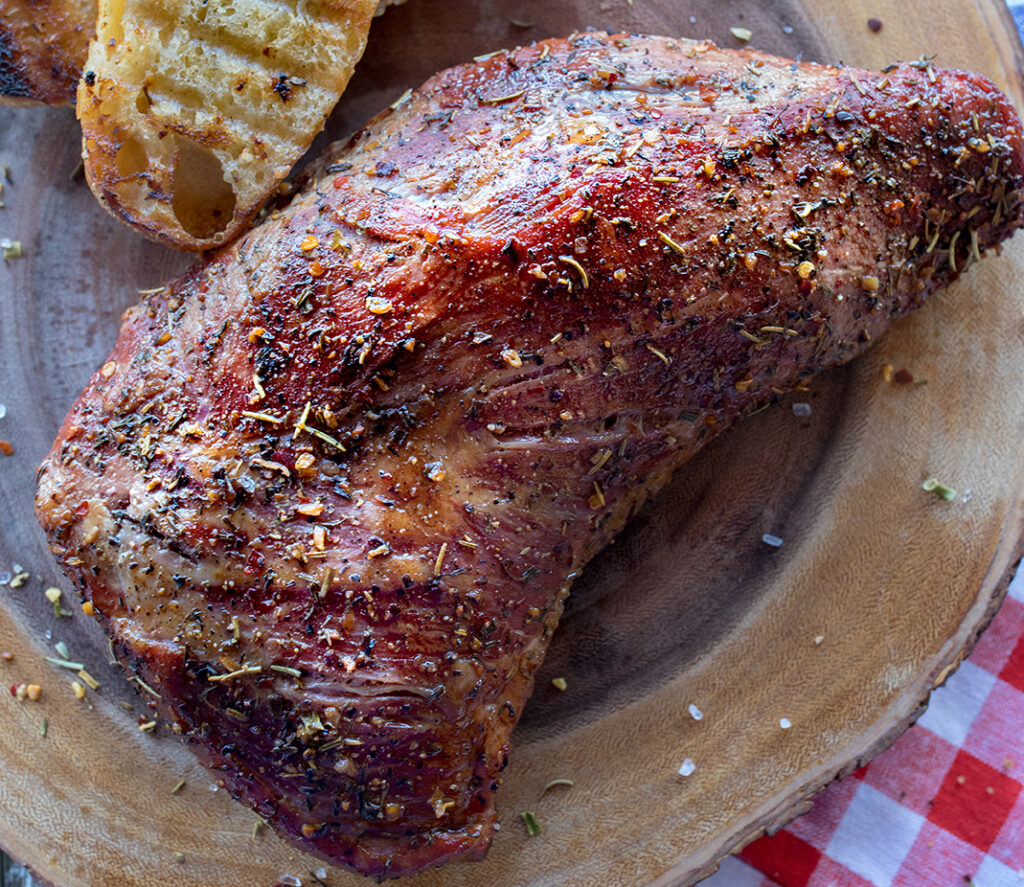
Modern Tri-Tip Twist
Today, there has been a slight and somewhat controversial modification to this iconic meal. The two terms today are “authentic” and “traditional.” The Santa Maria Elks Lodge #1538, which has been producing some of the best Santa Maria Style BBQ for years, consider the “authentic” cut of beef to be the top-block and cooked on long, steel rods. On the other side of the pendulum, BBQ companies, restaurants and home cooks consider tri-tip the “traditional.” The choice is up to you, but if you can get to the Santa Maria area, please try both cuts and decide if authentic or traditional is your favorite.
Replacing top block sirloin with tri-tip started with one man. In the 1950s, a Santa Maria butcher named Bob Schutz introduced the cut, which is a two-to three-pound triangular-shaped piece that’s cut from the top sirloin, he called it “tri-tip.” Butchers and supermarkets once used this cut of beef as part of a ground beef mixture or cut it up for stew meat. Today, because of its popularity and requests by consumers, butchers are now offering this as a staple piece in meat cases.
What Makes Tri-Tip So Great
What’s so special about this triangular cut of beef? Why do BBQ enthusiasts love it? If my butcher does not have it? Let’s answer these questions. The cut is special because it takes a well-trained butcher to remove it from the side of beef. Since the tri-tip sits just above the top sirloin it’s hidden by a fat cap. The muscle pattern of the tri-tip is a solid piece of beef. At one end you have the point, full of fat and muscle. On the opposite you have the flat or the leaner end. BBQ enthusiasts use this cut for three reasons.
- First, it’s one solid piece of beef, making grilling, seasoning, cooking and slicing simple and easy.
- Second, a well-trimmed tri-tip with a ¼ to ½ inch fat cap will self baste during the cooking process. That fat also develops a beautiful char during the cook.
- Third, is the simplicity of the cooking style. Traditionally cooked over an oak wood fire takes about 40-45 minutes. Remove the tri-tip from the fire at 138 degrees F and give it a 15-20 minute rest. This will allow all those concentrated juices to redistribute back into the meat instead of all over your cutting board.
Tri-tip can be found at butcher shops and grocery stores across America. But on the rare occasion you can not find it just ask your butcher for a triangle roast or bottom sirloin primal cut; they will be glad to help you.
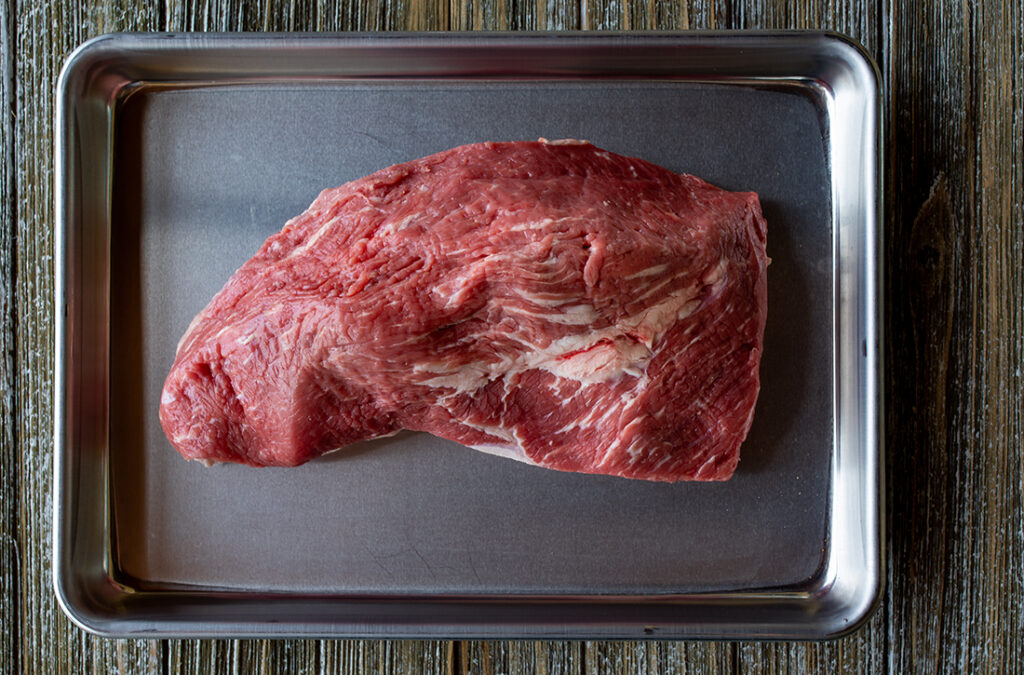
Smoke ‘Em If You Got ’Em
Although it is non-traditional, you can absolutely smoke a tri-tip, and it is delicious. Season the beef, make your fire out of oak wood, and cook it at about 225 degrees for around 3 hours or when the beef reaches an internal temperature of 135 for medium-rare. Once the meat is at temp, allow it to rest, then slice and serve. The pink smoke ring will be somewhere around ½-inch because tri-tip is a low-fat cut, so the smoke penetrates it perfectly.
Host a Santa Maria BBQ Party
Hosting your own Santa Maria style BBQ is simple. Use a BBQ that’s set up for open-flame grilling, a grill grate that can easily be raised or lowered depending on the heat from the fire. Serve traditional sides: pinquito beans, fresh salsa, tossed green salad, and grilled French bread that’s basted with butter and garlic. That’s it; simple, traditional and delicious. If you wanted to raise the bar, there have been additions over the years to this meal that consist of grilled Spanish-style chorizo, grilled venison, chicken and quail. But if you are on the California coast, the addition of grilled Santa Barbara spot prawns or California lobster take this meal to a different experience.
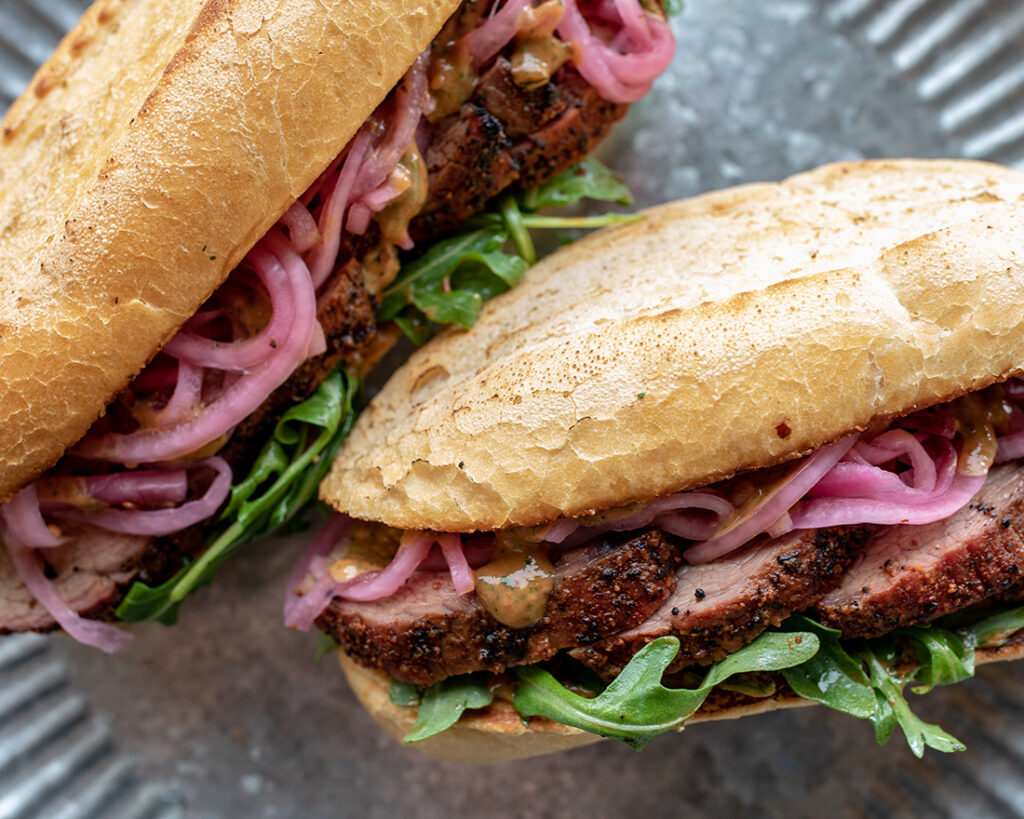
The simple balance of salt, pepper and granulated garlic is all that’s needed. No marinades, brines or injections for this cut. Complicated ingredients have no place here; remember, you are replicating the simple flavors of long ago and with very little fuss.
Slicing tri-tip correctly is the key. There are two grains that intersect, the first is the point with its vertical grain. Then about ¾ of the way to the flat end the grain changes to a horizontal pattern. The best way to slice this cut is by splitting the roast at the meeting point of the two grains. Then, cut against the grain with slices no thicker than ¼ to ½ inches. The tenderness is unbelievable when you grill it correctly. The center will be beautifully pink with a smoky outer layer that wraps each tri-tip slice. One very serious rule about Santa Maria style BBQ is that there is no BBQ sauce; the juices produced will be all that you need to enjoy this meal.
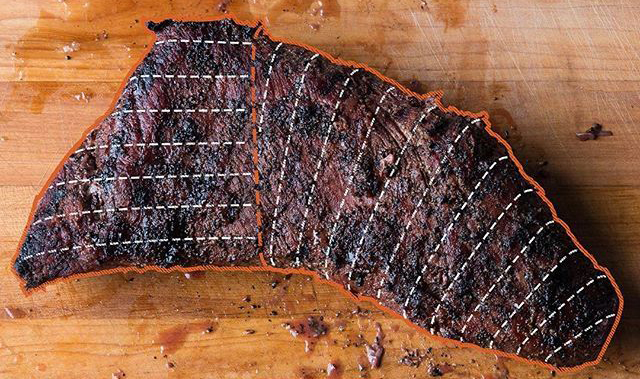

Ingredients
- 1, 3-4 pound tri-tip, trimmed
- 1 bag arugula salad greens
- 1 package French bread sandwich rolls
- Mustard sauce (recipe below)
- Pickled red onion (recipe below)
- Tri-tip seasoning (recipe below) Seasoning
- 2 Tablespoons Kosher salt
- 2 Tablespoons coarse ground black pepper
- 1 Tablespoon granulated garlic
Instructions
- Mix all the spices together in a small container with a lid, shake well and set aside.
- Trim off any large areas of silver skin or fat on the tri-tip. Rub seasoning all over the meat.
- Seasoning rubbed into the meat befor grilling.
- Seasoning rubbed into the meat before grilling. Photo: Kate Dunbar
- Refrigerate covered for 4 – 6 hours. Remove from refrigerator and let stand for about an hour before placing on the hot grill.
- After you remove the tri-tip from the fridge, light your cooking heat source. Heat a gas or propane grill to high, or light one charcoal chimney full of coals or chunks of oak wood.
- When the charcoal or wood chunks are at temp, spread evenly over the BBQ and place the grill over the heat.
- Clean the grill grate well and swipe it with an oiled paper towel to clean and create a non-stick surface.
- If using a gas grill reduce grill temp to medium-high (about 400 degrees).
- Grill the meat over direct heat fat cap side up, over medium-high heat for 15 minutes, turn the meat over to the other side and adjust the fire, turn every 10-15 minutes. Around 40-45 minutes total cooking time or until it reached the desired temperature.
- The tri-tip is cooked once the center reaches 135 degrees F for rare or 142 for medium rare.
- Remove from heat and rest for 15-20 minutes, then slice against the grain and serve.
- For sandwiches slice the beef about 1/8? thick, grill your bread and place the mustard sauce on both sides of the bread.
- On the bottom piece place a good handful of freshly washed arugula then the sliced tri-tip and pickled onions.
- Place the sandwich top on and enjoy immediately.


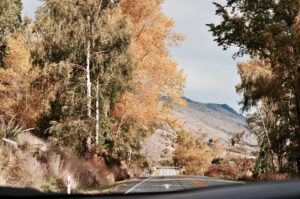
 Save Recipe
Save Recipe